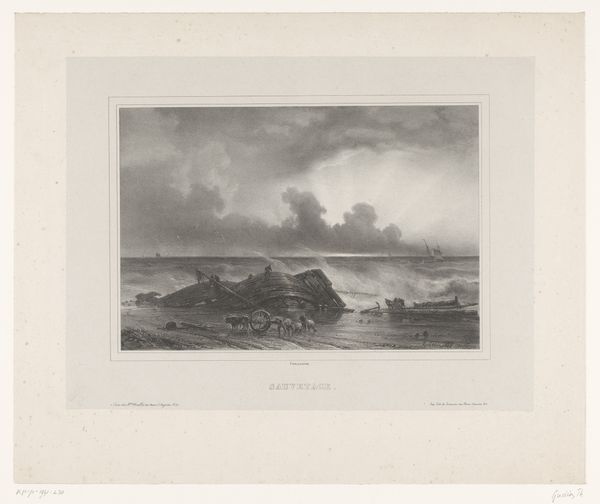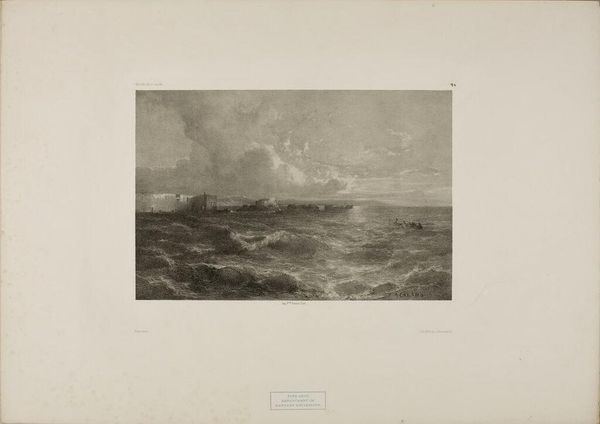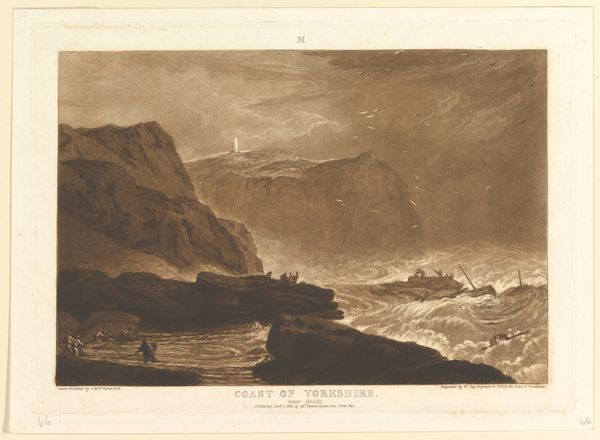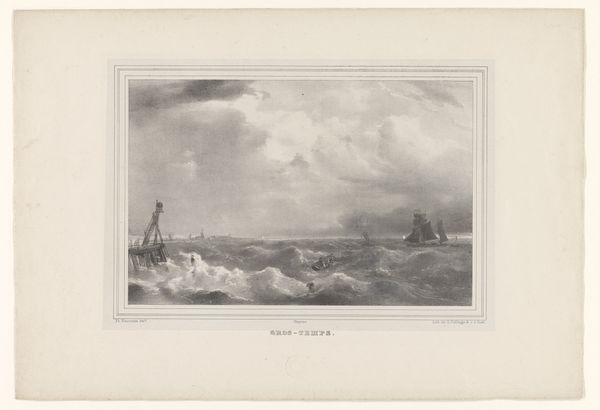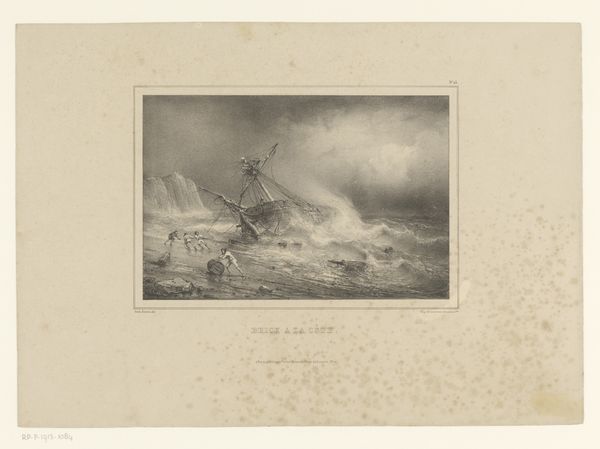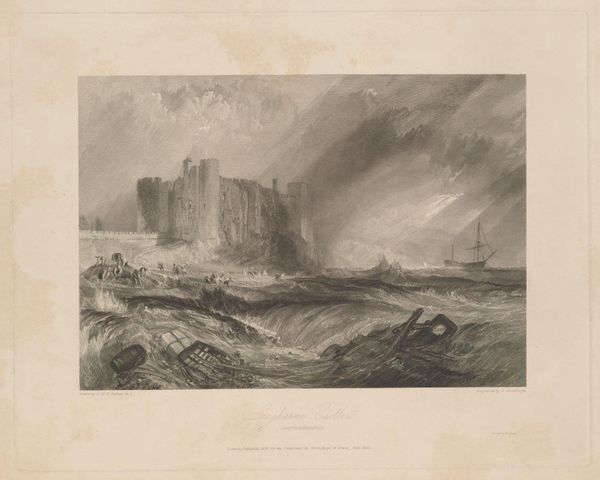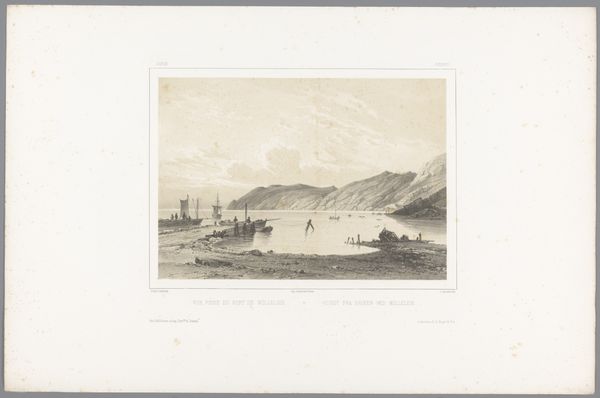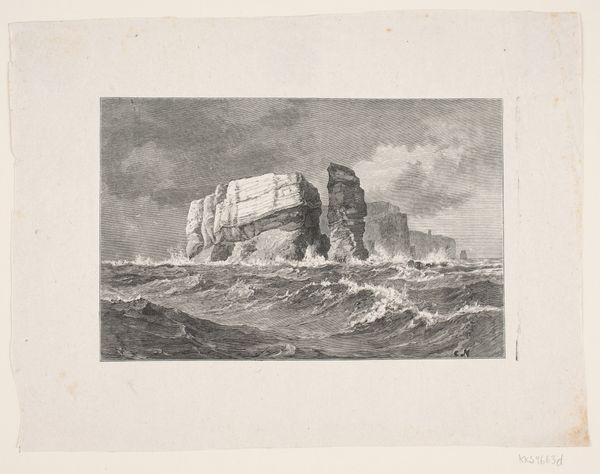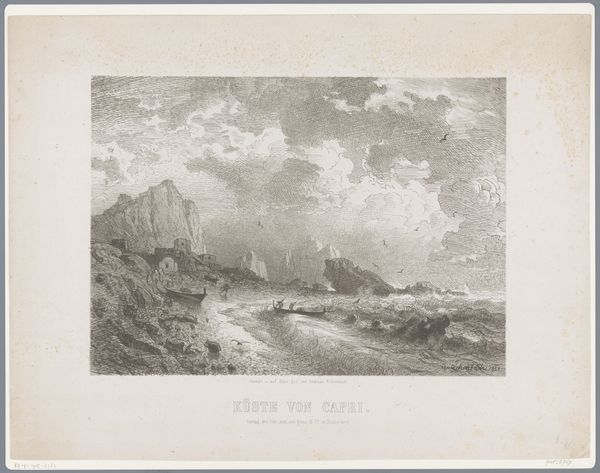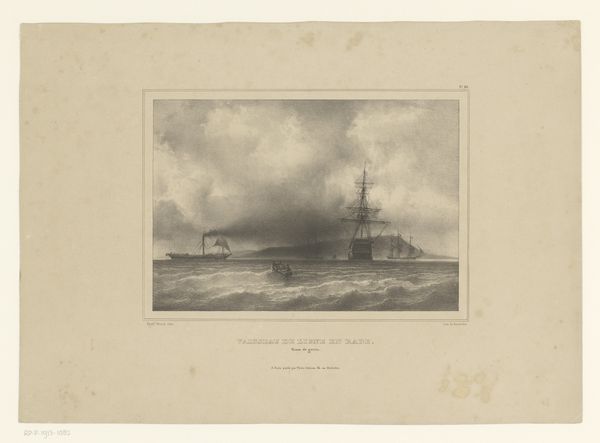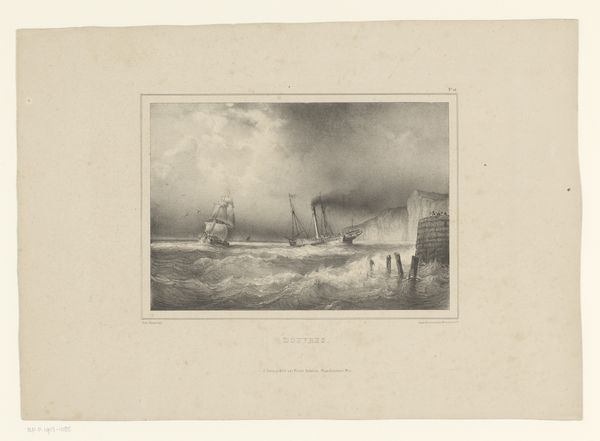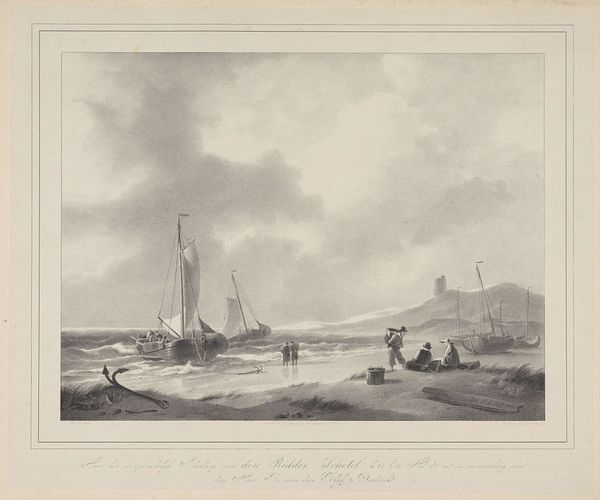
Fotoreproductie van het schilderij Annalkande storm: motiv fran Bohulän door Edv. Bergh 1850 - 1876
0:00
0:00
#
pencil drawn
#
photo of handprinted image
#
light pencil work
#
photo restoration
#
pencil sketch
#
light coloured
#
old engraving style
#
pencil drawing
#
pencil work
#
watercolor
Dimensions: height 169 mm, width 260 mm
Copyright: Rijks Museum: Open Domain
Curator: This is a photographic reproduction of "Annalkande storm: motiv fran Bohulän," a painting by Edv. Bergh, likely created sometime between 1850 and 1876. Editor: It has this ghostly, melancholic beauty. The scene is turbulent, but somehow muted, subdued by the monochrome palette. Curator: Bergh was clearly captivated by the wildness of the Bohuslän coast. He returns us to a place of harsh beauty and reminds us of the ever-present threat and promise of nature. I wonder about the absence of color—does it signify something? Perhaps a desire for simpler times? Editor: Maybe, but I think it's more complicated. Look at how the small figures on the beach are dwarfed by the waves and the brooding sky. To me, this artwork embodies a critical questioning of humanity’s place in nature, an inquiry into exploitation and resilience in a landscape that is historically defined by extraction of marine resources, especially the herring fishing that experienced decline during the latter half of the 19th century when the artwork was created. Curator: The herring’s symbolic death and possible rebirth, if one views the landscape as a matrixial ground for hope… that is fascinating. Even the materials, perhaps pencil and watercolor, seem fitting for a landscape both delicate and enduring. Editor: Exactly. The texture adds a sense of realism to this depiction of coastal existence; at the time of its creation, Sweden was an agricultural society on the cusp of modernity, so the photograph, and also the sketch as such, are imbued with longing, both towards an industrial future and a lost peasant past. Curator: Yes! And think about the enduring iconography of the sea itself—a source of livelihood, of freedom, and a place of inherent danger, carrying with it deep symbolic meaning. Editor: This tension really adds to its powerful narrative and I read it as an urge towards social action. What a stark meditation on survival! Curator: A powerful and complex interplay of observation, artistic skill, and social commentary indeed! Editor: Bergh really gets you thinking; so relevant today.
Comments
No comments
Be the first to comment and join the conversation on the ultimate creative platform.
